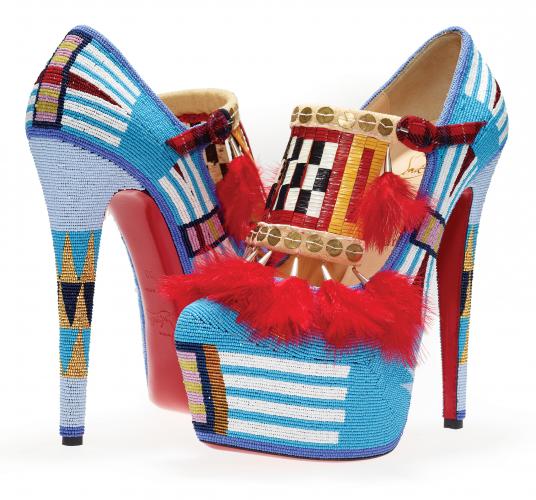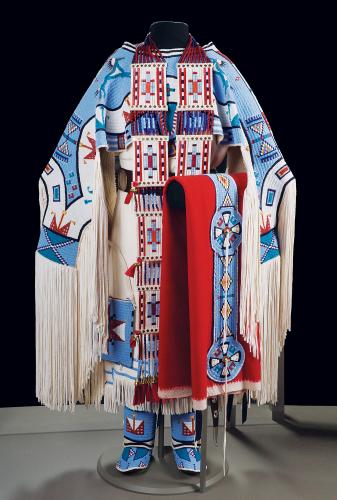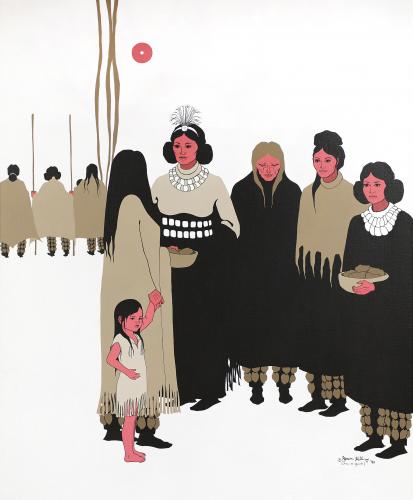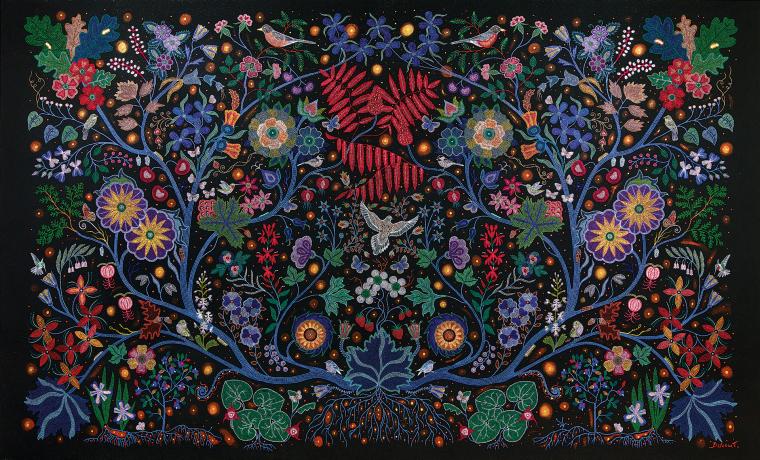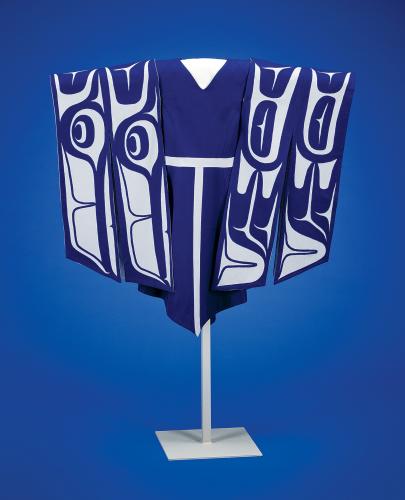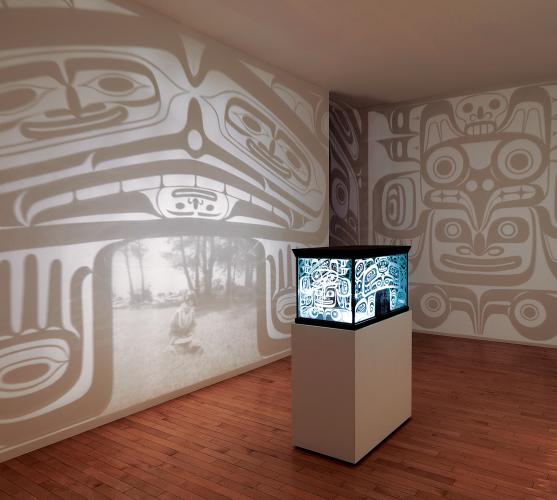From a 1,000-year-old Pueblo black-on-white painted pot to a 2017 digital photograph, the range of pieces in the new exhibition “Hearts of Our People: Native Women Artists” reveals the true breadth and depth of these women’s talents—something that has been long overlooked. Women have created the majority of Native art, but their individual creativity and influence has been ignored by the art world. This exhibition could help change that.
“Hearts of Our People” is on view at the Renwick Gallery of the Smithsonian American Art Museum in Washington, D.C., until May 17. The Minneapolis Institute of Art organized and first exhibited this extensive collection before it traveled to the Frist Art Museum in Nashville, Tennessee, and then to the Renwick. It will next appear at the Philbrook Museum of Art in Tulsa, Oklahoma, beginning in June.
The exhibition features more than 80 pieces, many by today’s leading Native women artists. The varied works reflect tradition yet respond to a changing world. While many were created with traditional materials such as clay, beads and wood, others use contemporary media, including photography and video. The range expresses the artists’ complex and diverse cultures, say the exhibition’s co-curators Jill Ahlberg Yohe and Teri Greeves (Kiowa). Even the descriptions of the works in the exhibition, written in both in English and each artist’s Native language, reflect their diversity.
Frequently in the past, art collectors and museum staff assigned traditional works to cultures—a “Hopi pot” or a “Cheyenne shirt”— yet rarely acknowledged that their creators were women. “Ignoring women’s names was part of the mindset that considered crafts as shared, repetitive and tradition-bound practices rather than as individualized arts,” write art historians Janet Catherine Berlo and Ruth B. Phillips in the exhibition’s catalog.
To highlight the artistic achievements of Native women, Smithsonian’s National Museum of the American Indian and American Art Museum are cohosting a symposium, Thoughts of Our People from “Hearts of Our People” on March 28 at NMAI in Washington, D.C. Basket maker Kelly Church (Ottawa/Pottawatomi), ceramicist and textile artist Anita Fields (Osage), textile weaver Carla Hemlock (Kanienkeháka) and multimedia artist Jolene Rickard (Tuscarora) will each talk about their own work. Then they will discuss the role of women as artists in Native communities in a conversation led by exhibition curators Greeves and Ahlberg Yohe.
“We’ll discuss the approach we took to create the exhibition and talk about Native art from the perspectives of the makers,” says Ahlberg Yohe.
The speakers are among the 21 Native women artists and scholars who formed the advisory board that defined the exhibition’s objectives and determined which artists and objects to include. “Usually exhibitions reflect the vision of a single curator who chooses the works,” says Stephanie Stebich, the Margaret and Terry Stent Director at the Smithsonian American Art Museum. “But this one is unusual in that it reflects the collective vision of the artists themselves.”
The curators have organized the varied works under three headings: Legacy, Relationships and Power. “Legacy” reflects working within an extended tradition: Ways of gathering material and fashioning it into art are both culturally transmitted through time and adapted to each generation’s evolving vision. The resilience and continuity of Native peoples in the face of centuries of violence, displacement and discrimination at the hands of Europeans is yet another legacy.
“Relationships” exist not only with family and community but with all elements of the world. For example, a basket maker may harvest reeds or grasses for raw materials but also take responsibility to ensure that those plants continue to flourish for future generations.
“Power” is expressed on several planes. Physical power is needed to gather and prepare traditional materials such as clay or branches or animal hides to form into works of art. Yet both physical and spiritual power underlie a women’s ability to form life in the womb. In addition, their political power is reflected in their leadership roles within and outside their communities.
These themes are reflected in Native women’s art and beyond. “I want the art world to understand what we know and how it has influenced the rest of the art world,” says Greeves. “It may be unnoticed, but it’s there.”
Modern masters like Pablo Picasso, Jackson Pollock, Andy Warhol and Donald Judd were in part inspired by Indigenous art of the Americas, Africa and Oceania, often reflecting the ingenuity and innovation of master Native artists—many of them women, as the catalog notes.
With works ranging across generations of Native women artists, “Hearts of Our People” offers a powerful expression of both continuity and innovation—potentially motivating more such exhibitions to come. Stebich says, “The show represents women from the past and the present and will inspire artists of the future.”

